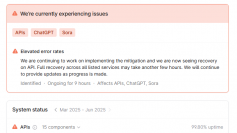Huawei's livestream event on YouTube unveiled the newest set of smartphones tech geeks are gawking at right now -- the P40, P40 Pro, and the P40 Pro Plus. Needles to say, the Chinese tech giant's new flagships feature cameras that rival the best out there, be it Samsung or Apple.
Starting with the most expensive of the trio, the P40 Pro Plus' zoom capabilities clearly outshine its brothers. For the first time in history, a phone with a 10x optical zoom exists putting the Galaxy S20 Ultra's 4x optical zoom to shame. But like the S20 Ultra, the Pro Plus can also handle 100x zoom, which Huawei showed in a comparison photo. The Pro Plus back cameras include a 50MP zoom, a 40MP ultrawide-angle camera, an 8-megapixel optical zoom, and a light-of-flight depth sensor.
The P40 Pro, meanwhile, features a 40MP ultrawide lens and a 12MP 5x optical zoom. To make your photos look more artsy with better depth, there's also a time-of-flight sensor. As for the standard P40, it comes with an 8MP optical zoom and a 16MP ultrawide lens.
If you're wondering how many cameras are available for you to enjoy, the P40 Pro Plus has five, the P40 Pro has four, and the standard P40 has three. Those are only the rear cameras, by the way. The entire P40 lineup features with a larger sensor for better low-light imaging and a 50MP standard zoom lens.
While the P40 family's zooming skills are outrageous, its low-light imaging feature is equally remarkable. And that's not all -- there's also a mode that can remove unwanted persons in your photos.
Cameras aside, the Huawei P40 series ships with impressive hardware out of the box. As expected, all have OLED displays, support HDR, and have high resolutions. Both the P40 Pro and P40 Pro Plus' displays reach the sides of the device that they're basically without a bezel.
And now for the price: the P40 Pro Plus costs about $1,500; the P40 Pro at $1,100, and the standard P40 at around $900. The Pro Plus will ship in June, while the standard and Pro versions will ship April 7.
But wait, none of these phones are available in the U.S. and there will be no trace of Google services either. That's all because of the ongoing trade war between China and the U.S., though by now, that's pretty much old news.






